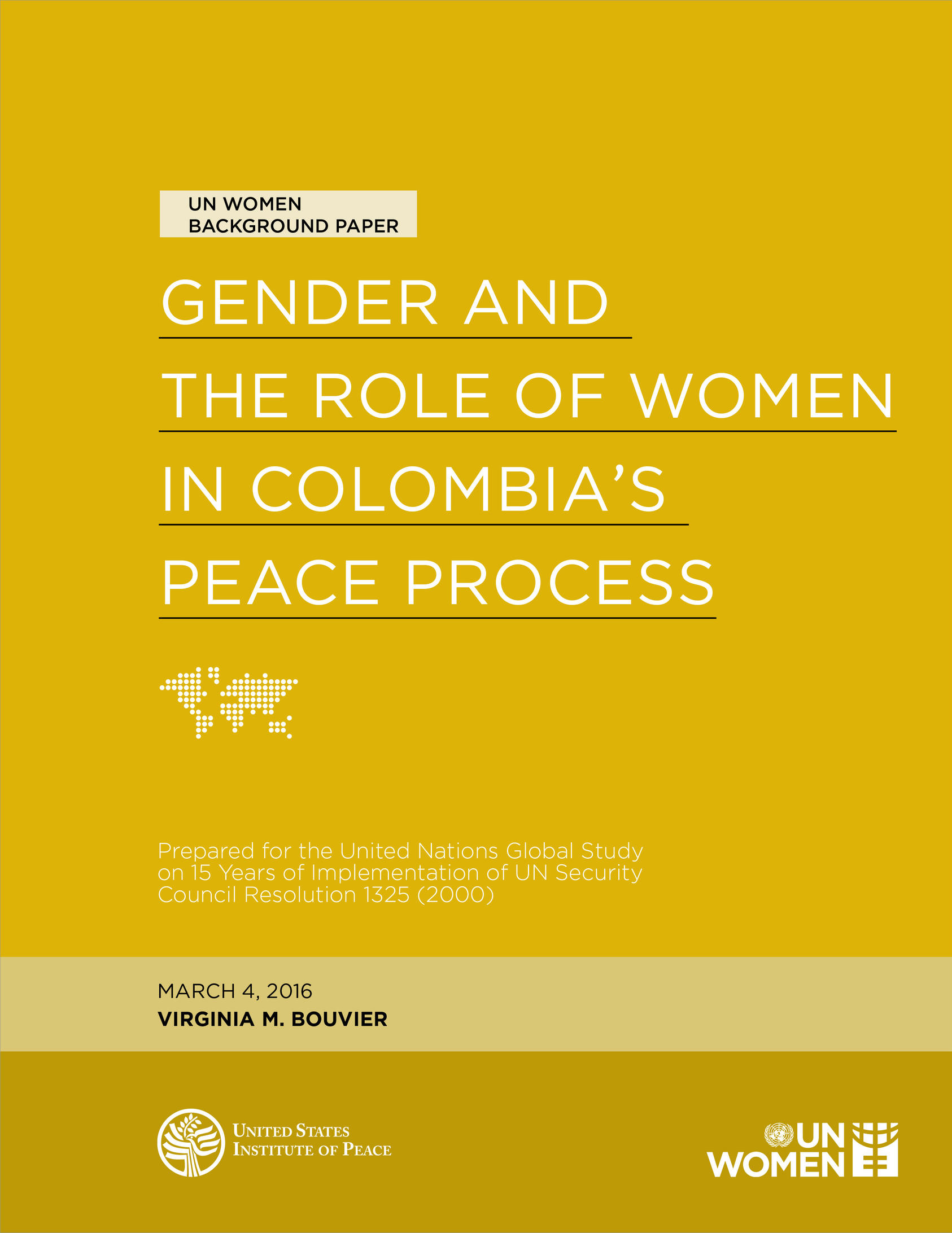The promises and visions articulated in United Nations Security Council Resolution 1325 and subsequent UN resolutions and position papers that recognize the connection between gender equity and women’s participation in all aspects of peace processes and peacebuilding on the one hand, and international peace and security on the other, have not been fulfilled. Nonetheless, these resolutions have opened the way for advocacy that has had some successes in specific contexts. Colombia offers one such case.
Through desk research, literature review, and personal interviews, this paper provides an overview of the Colombian internal armed conflict and the peace process currently underway to transform it.1 It begins with an historical overview of the conflict, and then explores some of its gender dimensions. It analyzes the differential impact of the internal armed conflict on the lives of women and men, LBGTI persons, and boys, girls and adolescents, as well as the intersectionality between multiple components of identity, including gender, class, age, ethnicity, and region. The paper then turns to the peace process. It explores the roles of women in preparing the ground for a political solution to Colombia’s internal armed conflict. It considers women’s official, semi-official, and unofficial roles at, around, and outside the peace talks that were launched in late 2012 between the Colombian government and the Colombian Revolutionary Armed Forces (FARC-EP). This paper underscores the essentially gendered nature of both war and peace. It assesses shifting gender roles and ideologies, and the ways that they intersect with a peace process and transitions in a post-Accord period, particularly in relation to issues of transitional justice. Finally, my paper explores how greater consideration of gendered dynamics, as well as increased participation of women in the peace process and all commissions and bodies created to implement peace accords, will better equip Colombia to address the challenges ahead and will help ensure a more sustainable peace.
